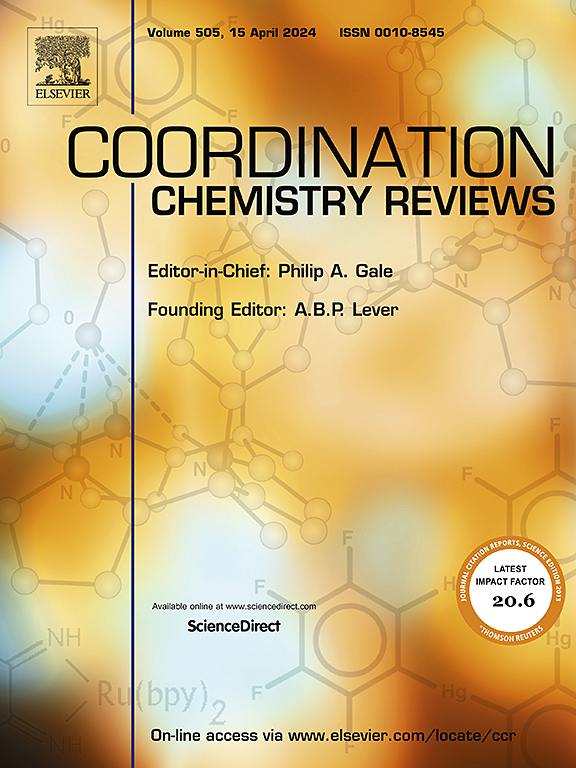Metal-organic framework materials in NH3-SCR: Progress and prospects
IF 20.3
1区 化学
Q1 CHEMISTRY, INORGANIC & NUCLEAR
引用次数: 0
Abstract
Metal-organic framework (MOF) materials have emerged as promising catalysts in the selective catalytic reduction (SCR) of nitrogen oxides (NOx) using NH3. This review highlights the various types of MOF materials commonly applied in NH3-SCR processes, including UiO-66, MIL-101, MIL-100, HKUST-1 (Cu-BTC), ZIF-8, ZIF-67, and other BTC series catalysts. Additionally, it provides a comprehensive analysis of the NH3-SCR denitrification (de-NOx) reaction mechanism occurring on MOF materials, encompassing active sites, intermediate states, and reaction processes. Furthermore, the review conducts a thorough analysis of the poisoning mechanisms of water, sulfur, alkali metal, and alkaline-earth metal that may occur during NH3-SCR reactions with MOF materials, along with strategies to enhance their tolerance to poisoning. The challenges that MOF materials face in NH3-SCR de-NOx applications are outlined, alongside prospective future directions and applications. Effective strategies, such as constructing protective sites, modifying coordination structures, tuning pore architectures, and designing multi-metal active centers, are proposed to improve the redox and acid cycles and the tolerance to poisoning in NH3-SCR reactions. In conclusion, MOF materials hold tremendous potential in de-NOx catalysis, but practical gaps relative to industrial demands remain. This review aims to bridge these gaps and enhance the feasibility and efficiency of their industrial applications. Attention is drawn to the importance of continued research and development to optimize these materials for practical use, ensuring they meet the robustness, durability, and performance required for large-scale implementation in NH3-SCR de-NOx technologies.

求助全文
约1分钟内获得全文
求助全文
来源期刊

Coordination Chemistry Reviews
化学-无机化学与核化学
CiteScore
34.30
自引率
5.30%
发文量
457
审稿时长
54 days
期刊介绍:
Coordination Chemistry Reviews offers rapid publication of review articles on current and significant topics in coordination chemistry, encompassing organometallic, supramolecular, theoretical, and bioinorganic chemistry. It also covers catalysis, materials chemistry, and metal-organic frameworks from a coordination chemistry perspective. Reviews summarize recent developments or discuss specific techniques, welcoming contributions from both established and emerging researchers.
The journal releases special issues on timely subjects, including those featuring contributions from specific regions or conferences. Occasional full-length book articles are also featured. Additionally, special volumes cover annual reviews of main group chemistry, transition metal group chemistry, and organometallic chemistry. These comprehensive reviews are vital resources for those engaged in coordination chemistry, further establishing Coordination Chemistry Reviews as a hub for insightful surveys in inorganic and physical inorganic chemistry.
 求助内容:
求助内容: 应助结果提醒方式:
应助结果提醒方式:


